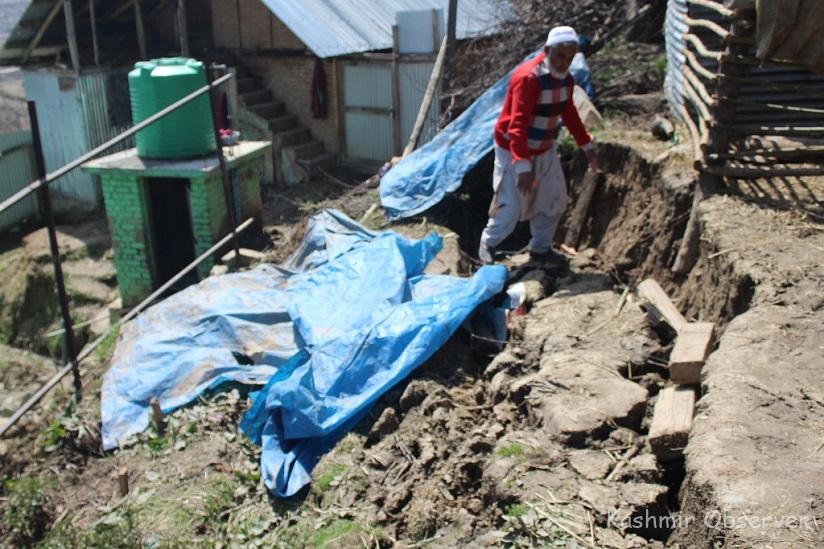 Shripora villager standing on the crumbled land. KO Photos by Malik Nisar
Shripora villager standing on the crumbled land. KO Photos by Malik Nisar
One of the idyllic villages of the valley is rendering people homeless due to its sliding ground situation.
By Malik Nisar
SITTING on the edge of his crumbled courtyard, Ashraf is looking at the troubled terrain dotted with decimated dwellings. The crushed scene reminds one of a war movie, where an outsider steps in a lane filled with the bombarded houses and devastated landscape.
But there’s no war going on in Shripora village of Baramulla. And yet, “we often wake up to see our courtyards gone,” says Ashraf, a post-graduate student working as plumber.
“Since the land is crumbling in the middle of the night, it has impacted us socially, economically, mentally.”
Broken houses, torn sheds and ruined gardens only make this uplifting hamlet a shelled village of Line of Control. But even as the faraway northern zone has thawed with the fresh Indo-Pak ‘peace pact’, the land beneath the villagers’ feet is relentlessly slipping in Shripora.
And this very fact is creating an existential crisis for the distressed country dwellers.

I meet Ashraf in a sunny spring day after trekking miles uphill. The sun beats down on rundown rooftops, as I walk through the gravel roads of the hilly hamlet. Children play hide and seek behind wrecked walls. Men and women collect bricks of their broken houses. Some elders nap near their wastelands.
“Landsides have caused mayhem here,” Ashraf continues in his glum voice. “We’re living in a continuous state of fear from last two year because these landslides keep no calendar.”
No wonder why, he says, people have grown paranoid and panicky in Shripora.

The crumbling life has also redefined the rustic routine and disrupted its ties with the neighhouring villages.
“Our tragedy is now isolating us from others,” Ashraf says, walking through the derelict structures. “Mindful of our precarious situation, people from other parts are now refusing to wed their wards in our village.”
Some hours into conversation and an old man with a long flowing grey beard starts detailing Shripora’s sliding situation.
With his wrinkled face and sunken eyes, Mohammad Jamal Dar has an ageless feel about him. Yet, his concern for his dispersing community is aging him fast. Like others, he’s also seeking closure to the crisis.
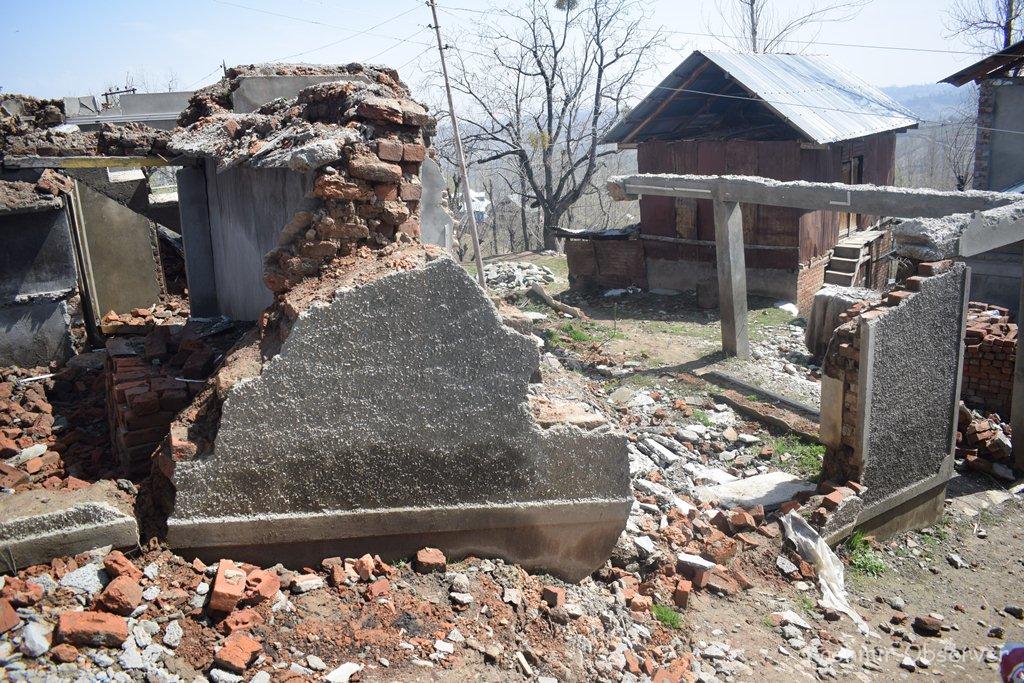
Dar takes me to other side of the village where cracks on the walls are widening, so are worries and woes. His endless destitution detailing clearly makes a case for the village desperately waiting for an intervention.
“People aren’t doing well economically here,” says Dar, a village patron figure. “Over the years we’ve toiled hard to construct these houses, but destiny is rendering us homeless.”
Besides losing their homes to the loose land, Dar’s tribe is equally facing official inertia—making them feel abandoned and agonized lots of Baramulla’s northern heights.

But this gloomy situation hardly stops weary townspeople from frequenting this haunted village for an escape route. While Shripora is a retreat zone for sightseers, it’s a “bottomless pit” for the natives.
Dar says that landslides started some two years back and till today, they’re far from the over.
“Natives are fighting nature here,” he adds. “We can’t explain why it’s happening to us. But the idea of losing homes is making all of us restless.”
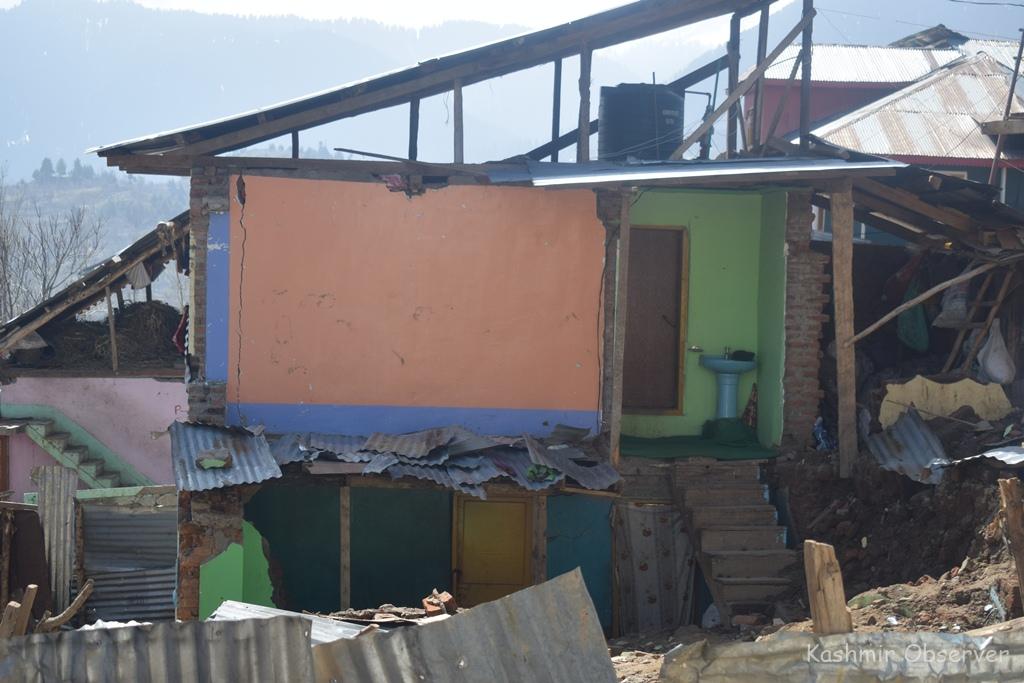
Out of total 300 families, the villagers say, fifty have completely lost their homes, while over hundred have suffered damages.
Many homeless families are now living in tin sheds. This past winter, Dar says, the vale’s classic cold almost froze families inside those temporary shelters.
But while some stayed and fought the vagaries of weather, many migrated to other places. Some are living with their relatives here and there.

One of the tin-shed dwellers, Abdul Khaliq Lone takes me to the place where once he shared laughter and lively moments with his family. But now, the home is a tumbledown structure on the caved-in courtyard.
“We’ve been witnessing this crestfallen situation over the years,” Lone says, as he stares at his lost home, “but it hardly creates any hue and cry in the official circles. Our plight is yet to move them.”
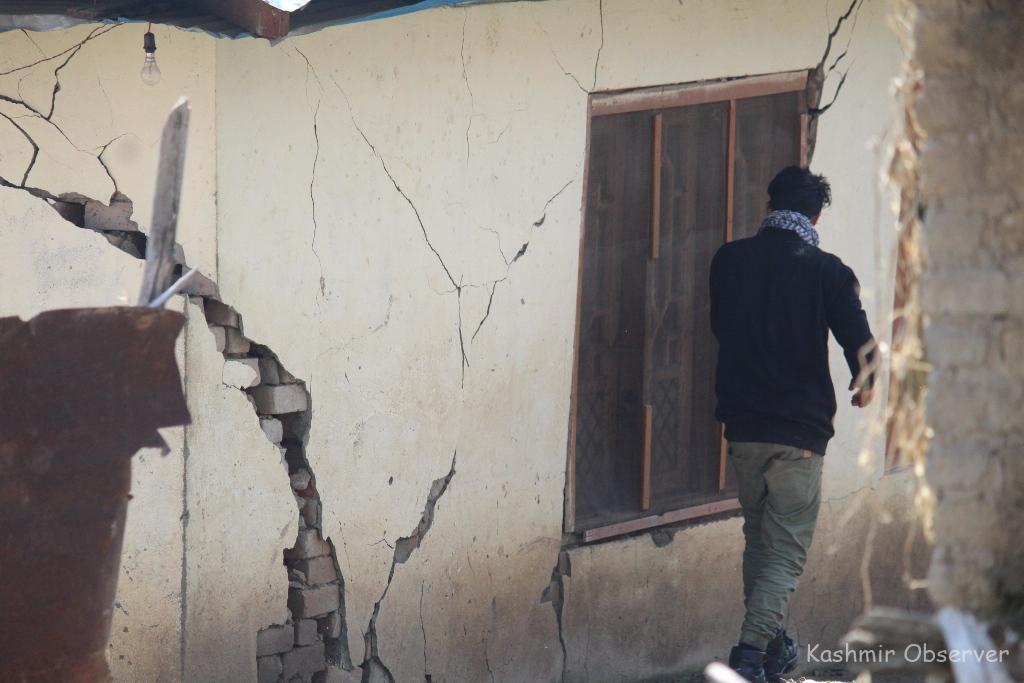
As desperate dwellings, even those makeshift sheds make life highly uncertain for the villagers.
“As landslides strike frequently and crumble a sense of calm here, chaos and confusion is engulfing our lives,” Lone laments.
“We don’t even have an option of migration because we’re dependent on our orchards and paddy fields here. If we move out, our family will starve.”
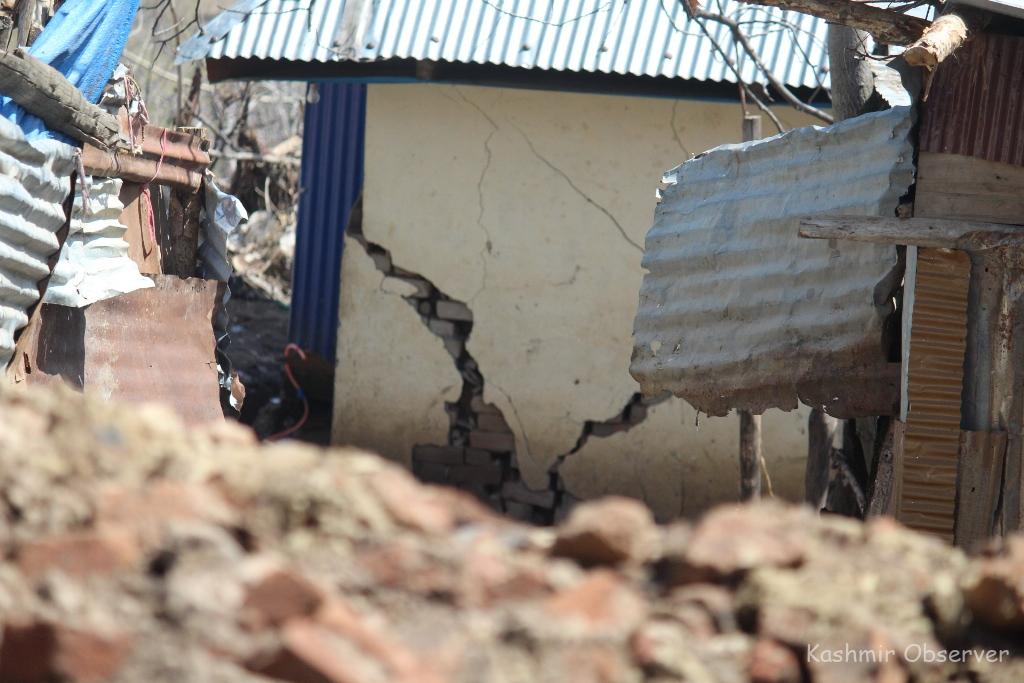
Shripora’s shaky ground situation only turns dangerous when it rains.
A week before my arrival, the rain had swept the village and created another wave of destruction.
Many villagers are now collecting bits and pieces of what used to be their home barely seven days ago.
“Whenever it rains,” Lone says, “we end up losing everything. Though these heavenly waters are needed for our farms, we keep praying against it now. Nothing hurts more than losing your home to a blessing!”

Even in its visibility, the commoner’s life torn asunder by the crumbled earth is harrowing. Besides a growing sense of destitution, Shripora is full of native narratives of despondency today.
To capture the crisis in detail, I climb a rickety flight of steps inside an abandoned home to get to the terrace. From that vantage point, the village looks a dreamy spot mired in an unending nightmare.
Dented land, poor drainage, sweeping destruction and distressed souls together torment Shripora’s simpletons.
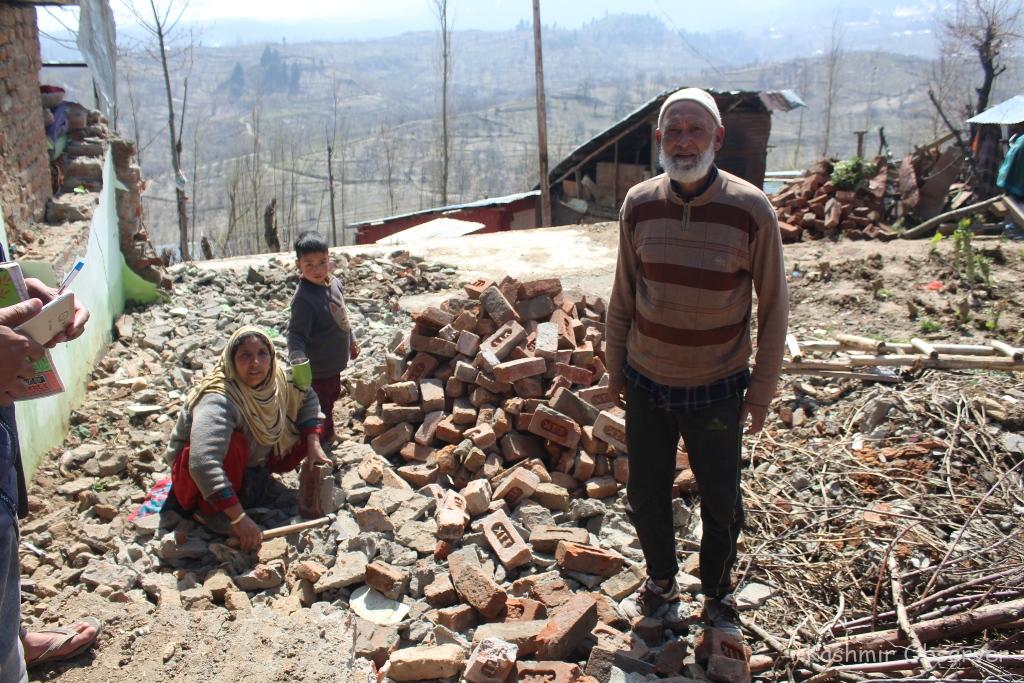
And while the crisis persists, the absence of crisis-managers is making the villagers feel as if they’re “children of a lesser god”.
“The successive governments have totally overlooked this village in terms of development and now we’re bearing the brunt of it,” says Mohammad Akbar, a shopkeeper in Shripora.
“We’re cut from rest of the other villages for almost two months now due to this sliding ground situation here. But then, since it’s the season of farming, we’re compelled to take our children to farms in a fearful state of mind to earn our livelihood.”
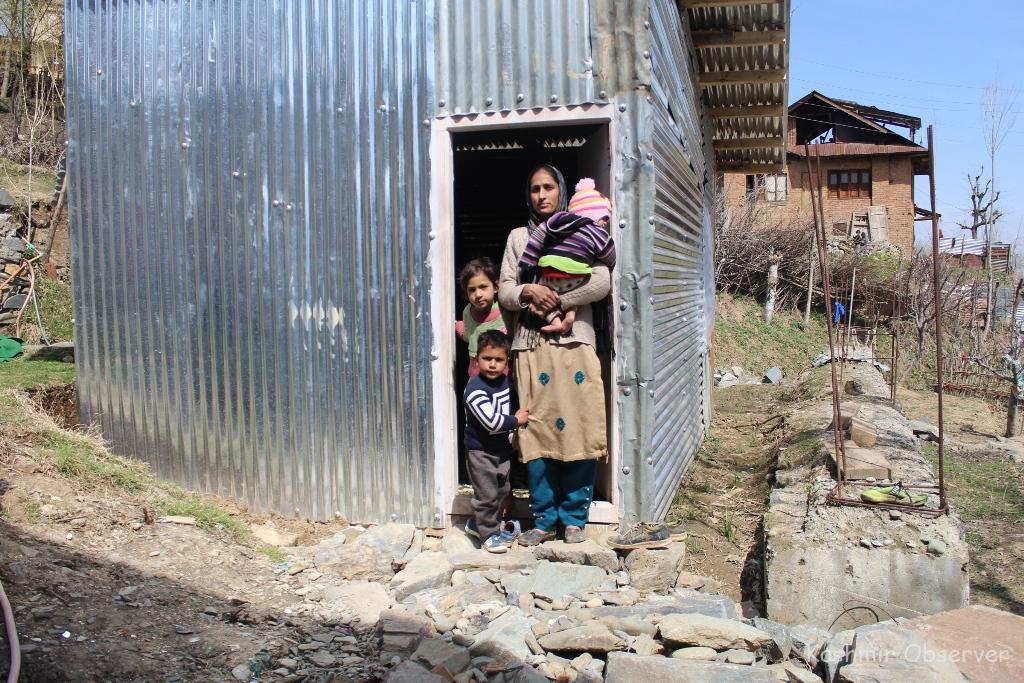
Although a few families were lately compensated, the far cry remains that the whole village should be rehabilitated to avoid any untoward incident.
Amid all this, none seems to have any clear clue about Shripora’s landslide situation.
“Call it nature’s wrath or some yet to be unearthed phenomenon, but whatever it is, we’re ending up homeless in the process,” says Akbar.
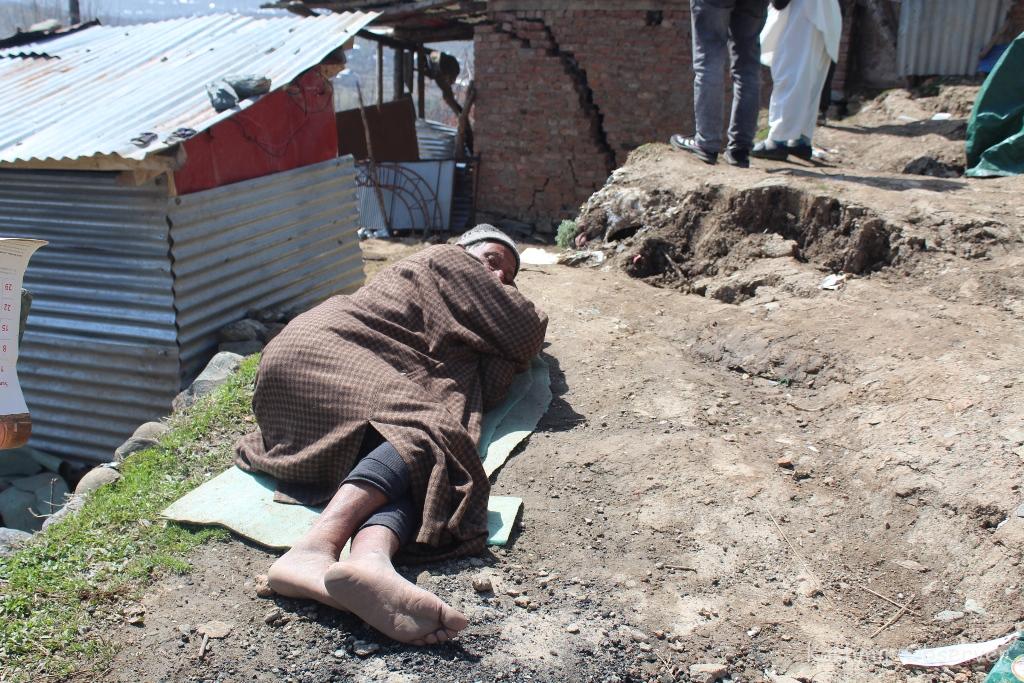
Down the hill, some earth science experts are calling for the detailed geo-technical studies to map and mitigate Shripora’s landslide situation.
“As far as I know, this area is prone to landslides due to Karewas,” says Mohammad Sartaj, Geology and Mining officer in Baramulla.
“An official expert team is currently studying this sinking situation there. But while the land is continuously crumbling and the study likely to take some time to unearth the situation, the villagers must be shifted to some other places for a time being for their safety.”
But at sundown, as I leave Ashraf behind at the crumbling heights, his fear arises from the ruins of Shripora: “What if all of us fall into the bottomless pit tonight!”
- Malik Yaseen contributed reporting
Follow this link to join our WhatsApp group: Join Now
Be Part of Quality Journalism |
Quality journalism takes a lot of time, money and hard work to produce and despite all the hardships we still do it. Our reporters and editors are working overtime in Kashmir and beyond to cover what you care about, break big stories, and expose injustices that can change lives. Today more people are reading Kashmir Observer than ever, but only a handful are paying while advertising revenues are falling fast. |
| ACT NOW |
| MONTHLY | Rs 100 | |
| YEARLY | Rs 1000 | |
| LIFETIME | Rs 10000 | |













